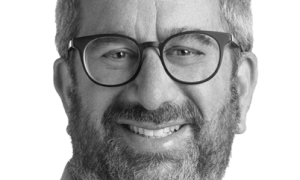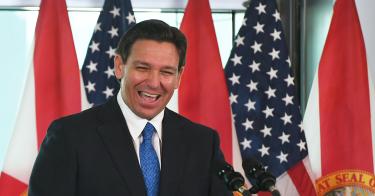Gov. Ron DeSantis (R-FL) has a plan for freeing public universities from the stranglehold of their diversity, equity, and inclusion bureaucracies. Before DeSantis launched this effort, it was widely believed, even among those who recognized the dangers of DEI, that there was really nothing public officials could do about the problem. Just like the weather, it was simply something we would all have to learn to live with. Public universities were thought to be outside of political control, and academic culture was thought to be too committed to DEI goals. But DeSantis is proving that something can be done. His plan is likely to make significant progress in dismantling DEI in higher education.
DeSantis is showing that DEI is not beyond the reach of elected officials, at least not at public universities. In most states, public universities are state agencies, just like the Department of Motor Vehicles or the Game and Fish Commission. They may have their own boards of trustees, but those boards were created, and can be modified, by legislation, and their activities are governed by state laws and regulations. States can reorganize how public universities are structured to achieve public purposes better, just as they can reorganize the DMV. Lawmakers may alter the size and composition of the Game and Fish Commission, as well as the process for appointing those officials, and they can do the same with the boards of public universities.
In the past, state officials refrained from addressing the rise of DEI bureaucracies in public universities, not out of an inability to do so legally but from a conviction that it was somehow inappropriate for them to interfere. DeSantis’s innovation was to recognize that this self-restraint was unnecessary, counterproductive, and based largely on a misunderstanding of what DEI bureaucracies actually are.
DEI units at universities are not faculty, nor are they engaged in the core functions of teaching and conducting research. They are staff with the ostensible purpose of helping welcome students, faculty, and staff from different backgrounds to campus and creating conditions that facilitate their success. DEI staff members develop a set of practices and inculcate related dispositions that university leaders believe are necessary for welcoming diverse groups and ensuring that they thrive. One might say that DEI staff members articulate and enforce a university-approved orthodoxy regarding a set of divisive political concerns.
>>> DEI Doesn’t Work—Taxpayers Shouldn’t Pay for It
Let’s leave aside the appropriateness of university staff serving as a political commissariat to police an approved political ideology. DEI staff members clearly are not covered by traditional norms protecting academic freedom because their activities do not consist of teaching classes or conducting research. They are staff, just like the bureaucrats who run student housing or work in the bursar’s office. No one thinks that how students are assigned to housing or pay their bills are matters covered by academic freedom. By recognizing that public university DEI bureaucracies are protected by neither law nor norms of academic freedom, DeSantis has shed the self-imposed shackles that deterred earlier efforts to rein them in.
In the process, he has also demonstrated just how weak the support for DEI bureaucracies is in the academy outside of those bureaucracies themselves.
To dismantle DEI, DeSantis is pursuing a series of initiatives. Most directly, he has proposed “forbidding institutions from using any funding to support initiatives relating to diversity, equity and inclusion, or DEI, critical race theory, and other programs he considers discriminatory.” Defunding the DEI bureaucracy is the most obvious way to dismantle DEI. But DeSantis understands that DEI activities may simply get renamed and reappear elsewhere within the university, so he does not rely solely on defunding DEI.
He is taking other steps to block any attempt to end-run his defunding effort. For instance, he is seeking to ban diversity statements from being required as part of hiring or promoting faculty. And he has appointed a slate of anti-DEI trustees to the New College of Florida, one of the state's smaller but most prestigious public institutions. Placing vocal critics of DEI, such as Chris Rufo and Mark Bauerlein, in charge of a state college has sent a clear signal to all of Florida’s state universities that DeSantis is serious about dismantling DEI.
To drive home the message, the newly appointed board removed the president of the New College in short order. That left no doubt. Senior university administrators who attempted to shield DEI would suffer consequences.
The 28 presidents of the Florida College System got the message. In a joint statement, they acknowledged, “The presidents of the Florida College System (FCS) also understand that some initiatives and instruction in higher education under the same title [DEI] have come to mean and accomplish the very opposite and seek to push ideologies such as critical race theory and its related tenets.” They then pledged that “our institutions will not fund or support any institutional practice, policy, or academic requirement that compels belief in critical race theory or related concepts such as intersectionality, or the idea that systems of oppression should be the primary lens through which teaching and learning are analyzed and/or improved upon.”
At Texas Tech University, leaders abandoned the use of diversity statements in professor hiring within hours of the publication of a piece in the Wall Street Journal documenting how those statements were being used to discriminate and keep out qualified candidates. The collapse of DEI continued to spread the next day, as Rufo reported on Twitter, “Texas Gov. Abbott's chief of staff sent a letter to all state universities warning that their DEI programs violate civil rights law.” The speed of DEI’s capitulation may make the French stand against the Germans look like Thermopylae.
The fact that higher education leaders could fold so quickly should not come as a surprise. The truth is that few university administrators, faculty, and students have any deep commitment to protecting DEI bureaucracies. It’s fair to say that the only enthusiastic supporters of campus DEI bureaucracies are those employed in them and the relatively small group of rabble-rousing students who can be organized by the DEI machinery to menace other administrators, faculty, or students who deviate from their orthodoxy.
This is the other key innovation of DeSantis’s strategy—and why it is likely to succeed. It was previously believed that university leaders, faculty, and students were so ideologically committed to DEI that those institutions could not be changed even if reforming politicians gained control of boards of trustees and ordered changes. Even many strong opponents of DEI thought that higher education was too recalcitrant to reform. DeSantis could see DEI for the paper tiger that it is, allowing him to tear it down.
Understanding how weak the support for DEI bureaucracies is on campus requires dispensing with old stereotypes of academics and thinking more clearly about how they perceive their interests. Senior university administrators should be thought of as being like the senior leaders of communist regimes just before the wall fell. They may mouth devotion to the communist revolution, but they are defined more by ruthless ambition than ideological commitment. Administrators in higher education rise within their institutions and get to move to higher-status universities not by scholarly accomplishment but by carefully avoiding scandal while checking all of the boxes of fashionable initiatives.
Those fashionable initiatives may look like ideology, but since fashions regularly change, successful administrators need to have weak ideological commitments so they can readily change to conform with the initiatives of the changing guard above them. If the dean makes interdisciplinary collaboration a priority, the associate deans need to be on board. If a new dean prefers focusing on enrollment increases, the associate deans have to be all-in for that. Newly appointed deans invariably launch new initiatives because this is how they demonstrate “leadership” to get that dean post at a better university or become provost someday. Like in crumbling East Germany, university leadership is a never-ending string of five-year plans that rarely last more than half that long. No one can be ideologically committed and succeed in such an environment.
University faculty members can be more ideologically committed, but their highest priority tends to be autonomy. That is, they want to be left alone to do whatever they want, whether that is focusing on their esoteric interests, pursuing some ideological agenda, or simply being allowed not to work too much. Even faculty ideologically sympathetic to the goals of DEI tend to be hostile to DEI bureaucracies because they rightly fear having their autonomy infringed upon. No professor wants to live in fear that something they say in class or write in an article will be reported as a violation of DEI bureaucracy-issued guidelines. And enough of them are familiar with Robespierre to know that their own ideological commitment may not be sufficient protection.
Surveys of professors confirm their preference for autonomy over DEI goals. For example, a recent survey asked U.S. academics whether they gave priority to academic freedom or social justice. Professors favored academic freedom over social justice by more than 2-to-1, with 58% prioritizing academic freedom and 26% preferring social justice. Professors were also asked whether the selection of course content should be driven by whether that material is “inclusive, representing the racial and gender makeup of the students,” or based on what would “feature the most intellectually foundational books and articles in the field.” Academics favored assigning “foundational texts” (47%) over choosing materials based on their inclusivity (39%).
>>> DeSantis Deals Blow to Woke Takeover of Education
To be sure, most academics are liberals, and some are radical ideologues. But it is entirely mistaken to believe that professors have been fully captured by DEI bureaucracies and will fight any effort to rein them in. Some professors may oppose DeSantis simply because they fear being controlled by him and his appointees more than they fear being controlled by DEI bureaucrats, but most would prefer being controlled by neither.
If efforts to dismantle DEI can effectively convey their commitment to academic freedom, they may find far more allies than opponents among the faculty. Even if faculty cannot be won over, in fear-driven universities, professors will bend to their new bosses as they did to the DEI bureaucrats before them. Academics are not a particularly courageous lot, given how eagerly they crave job security through tenure over the higher pay many of them might command outside of academia.
Students and their families are another reservoir of support for efforts to dismantle DEI. When we think of students, some of us might imagine blue-haired youth with nose piercings who delight in screaming at the top of their lungs. But radical activists are a tiny fringe of the student population. Most students just want to have a good time while they earn degrees that get them jobs. Their families tend to want those things even more, as long as the good time is not too much of a good time. Very few of these students or their families want to live in fear of crossing the DEI bureaucracy. In fact, recent polling found that 63% of students report that they censor themselves because they “fear reputational damage if they speak their minds.”
DeSantis is like President Ronald Reagan standing before the Berlin Wall demanding that it be torn down. At the time of Reagan’s speech, it seemed like an impossible dream. But within a decade, it was a reality. Support for DEI bureaucracies in universities is no stronger than the support that existed in crumbling Soviet regimes. By recognizing that he had the legal authority, consistent with norms of academic freedom, to push for dismantling DEI, DeSantis is about to reveal how quickly he can loosen the grip that DEI has had on higher education. Other governors will soon follow suit. In a few decades, we will all wonder why no one stood up to DEI earlier.
This piece originally appeared in the Washington Examiner




